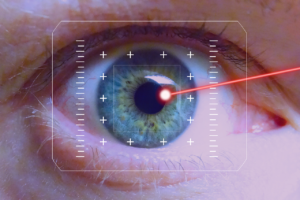The eyes are the gateways. They are significant not only for looking into some other sentient creature. It is also for how we perceive the universe surrounding us. There are treatments to control diseases related to the eye. Lasik eye surgery is one of them. Seeing and foresight are essential because they enable us to interact with our environments, make us secure, and retain our thoughts fresh. Eyes and perception are two different things. It is a visual feeling in which lighting bounces out of shapes and patterns before being focused by the retina. The central nervous system receives messages that are into pictures. They also protect people. It is critical to safeguard your eyesight and sight to prevent injury.
How eye directs us to our objective?
It helps us in the following ways:
- The beautiful part about perspective is that once you get it, you will gradually distance away from those who do not share it and connect yourself with those who do. No one will be capable of completing a goal. Since the cause is higher than right now, and that is the planned reason.
- If our idea is significant to us, the duration of effort we devote to achieving it will represent that. The principle is straightforward. We tend to confuse it. We can not get down the moments we missed now because the future is not assured. Wealth, connections, and chances may be replaced later in life, but the duration is irreversibly lost.
- It also shapes our routines. Your purpose creates the task list that lets you know what you will do and, throughout the period, forms your behaviors.
Information related to Lasik Eye Surgery:
Visual acuity (uncorrected vision), hyperopia (farsightedness), and irregularity are all treated with LASIK eye surgery. It is the frequent laser-assisted treatment. The technique, like other kinds of surgical treatment, reconfigures the lens. It is so that light into the eye is onto the retinal part for better vision. The operation is virtually painless and only requires around min to complete for both lenses. The benefits of a person’s perception without the corrective lenses begin right after the surgery, and eyesight improves and stabilizes over days. If you’re not a worthy choice for LASIK, there are a variety of other refractive surgery treatments to consider, including PRK and LASEK laser eye procedures done.

The procedure of Lasik Eye Surgery:
With a minimally invasive device known as a microkeratome or a fractional beam, your LASIK operator will first form an underlying membrane in your eyeball. The doctor then retracts the elastic sheet to access the entire ocular and uses an excimer beam to eliminate retinal cells. They emit a UV light stream that ablates small bits of material from the corneal, reshaping it so that light onto the retina concentrates more precisely on the cortex, resulting in better visibility. The aim for recurrence of the problem persons is to level the windshield, while perceptive individuals want sloping conjunctiva. Imperfection can be with optical coherence rays by flattening an uneven eye into a more usual form. The patch is then set firmly in overlaying the location. It is where the visual epithelium was after the technique realigns the eyeball. During the recovery stage after treatment, it adheres to the supporting ocular.
Precautions before LASIK Surgery:
To avoid any agony throughout your LASIK eye surgery spray, are to your eye before the operation. Your clinician may also prescribe some tranquilizers to help you unwind. The pupil will be beneath the light source, and a cover tube will maintain your lids exposed during the procedure. While producing the membrane, the therapist marks the eyeball using a color pen. A flushing band is next to your face. To avoid motion or disassociation from influencing the performance of the gap. While your ophthalmologist monitors your sight through magnification as the light shoots bursts to your retina, you will be allowed to look at a targeting spot for a brief duration. While you may sense some strain on your vision, the photon beam strokes gently remodel the membrane.
Pros of LASIK Surgery:
- Gaining clean vision does not take hours. In just a few hrs, the patients will experience a transformation.
- Many people see it as an existing procedure. It allows them to participate in even core things that were previously impossible to inadequate visibility.
- You’ll notice a significant improvement in your eyes.
Cons of LASIK Surgery:
- Preoperative persons with a better medication can spot a modest reduction in visual performance over time.
- Clients should not massage their eyelashes while they recover. It is because the blisters are during therapy.
- Persons considered inappropriate are frequently in their forties and fifties. It is because they may have eye problems, a condition in which the optical viewfinder of the eye stiffens and makes it difficult to see a perfect shot.
The qualities of an ideal LASIK applicant:
They are the following:
- You must stay until any problem that may impair whether your eye sockets react to a procedure or recover subsequently is addressed before having an operation. Your optics must be in good condition. Laser treatments may cause prolonged dry eye, in which you do not release enough moisture to keep your focus moist and clear.
- In dim lighting, you may be more susceptible to adverse symptoms such as markings, sneers, and Twizzlers if your irises are than average driving a vehicle.
- You must be eighteen years old for some operations and 21 years of age for others. Individuals less than these conditions may be an exception with consent from the participant legal guardian at the choice of the LASIK practitioner. Cataract surgery has no maximum age in most cases.
- Teens and many millennial lens care prescriptions and optical prescriptions frequently shift throughout the year. When receiving LASIK or other low sight, contact lenses must be stable for the past twelve months.
Final Words: LASIK Surgery
A non-surgical procedure is required at an ambulatory surgical center or in the appointment of your optometrist. Your palate is using a sensor by your occupational therapist. You may choose not to have the corrective procedure if you are comfortable with your lenses or spectacles. You and your optician can consider the pros and cons of LASIK collaboratively.

